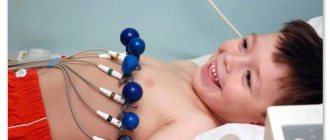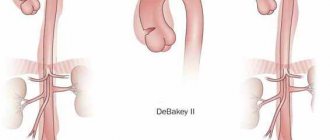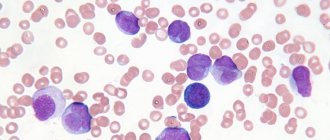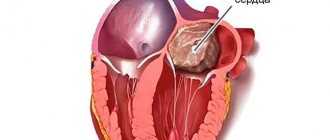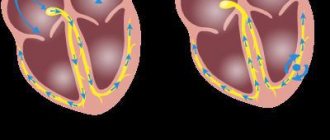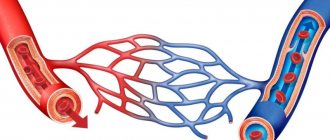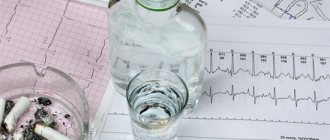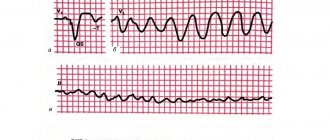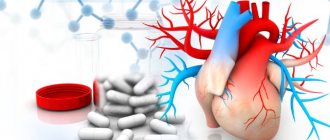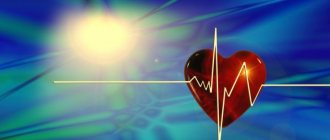Heart rate disorders are represented by a group of deviations that are highlighted in a separate category in the international classifier. The severity of the pathological process is determined by the nature of the disease, the characteristics of the patient’s body and the root cause.
Tachyarrhythmia is an acceleration of cardiac activity. Normal heart rate ranges from 60 to 90 beats per minute. Against the background of a violation, the level rises to 100 or more. Depending on the form, the pulse can reach 400. These are not full-fledged contractions, but chaotic movements, trembling of the ventricles or atria, which is even more dangerous.
Detection of tachyarrhythmia (also known as tachycardia) is the task of a cardiologist; detection requires electrocardiography (ECG).
The degree of risk is determined by the patient’s age, gender, life history, the presence of pathologies of the cardiovascular system, heart rate and the dynamics of the process.
Treatment is carried out in a hospital using drugs (antiarrhythmic) and physiotherapeutic techniques.
Mechanism of occurrence
There are two main types of tachyarrhythmia - sinus and paroxysmal. The latter, in turn, is divided into several more groups.
The first form develops as a result of disruption of the natural pacemaker, a special accumulation of cardiomyocytes. They are capable of independent, autonomous excitation without external stimuli.
The sinus node generates a bioelectric impulse. It passes through special fibers, bundles and moves throughout the myocardium, causing it to contract. The blood is expelled, the body is nourished.
As a result of one or another disorder (weakness of the pacemaker, blockade due to intoxication and other processes, inflammation, rheumatism, tumors), a violation of signal generation occurs.
Hence the weakening of cardiac activity. At the first stage, the body seeks to compensate for the deviation, sending strong impulses so that the organ works more actively. As fatigue occurs, tachycardia gives way to the reverse process, and efficiency decreases.
The paroxysmal form is associated with the same reasons, but the outcome is different.
Blocking of conductive bundles and excessive stimulation lead to disruption of the impulse movement. It does not reach the ventricles or atria.
As a result, each chamber begins to shrink at its own pace. Such chaos in the work of the heart ends with a sharp increase in the number of movements per minute; these are not full-fledged beats; most are recorded only through electrocardiography.
Attention:
Paroxysmal tachyarrhythmia is considered a more dangerous type of disorder. Since the probability of cardiac arrest and acute ischemia is approximately 60-70% higher, the mortality rate is also higher. If this occurs, it is recommended to call an ambulance.
Classification
It is carried out according to three groups of bases.
Based on the form of the pathological process:
- Sinus tachyarrhythmia. The most common. Develops as a result of insufficient or excessive activity of the natural pacemaker.
It does not pose a great danger to life and health, but causes a lot of discomfort for the patient. The heart rate rarely exceeds 150-180 beats per minute.
Over a long period of time, a person stops noticing the disorder and gets used to it. Despite its own comparative safety, one must be wary of deviations.
This is often an indication of developing heart failure.
- Paroxysmal form of the pathological process. It poses a great danger to life. The symptoms are pronounced, so patients immediately notice health problems, which gives a good chance of a complete cure or, at least, a timely response.
Recovery is carried out immediately, preferably in a hospital setting. The main difference is the paroxysmal course. Episodes last from a couple of minutes to an hour or more.
The second basis for classification is localization:
- Atrial form (supraventricular). Most often sinus. Paroxysmal less common. This type is fraught with disturbances in cardiac activity and insufficient blood emission. But this is a relatively rare occurrence. More often, no symptoms occur, except for the accelerated beating itself.
- Ventricular variety. Extremely dangerous. Cardiac arrest, stroke, heart attack, pulmonary edema are possible. Malfunction of the left chamber affects the ejection into a large circle. Hence the generalized ischemia of the myocardium and all organs.
Both the muscular organ itself and the kidneys, liver, and brain suffer. The likelihood of emergency conditions increases sharply. Treatment is urgent, in a hospital.
In both cases, they speak of fibrillation (atrial fibrillation) or atrial/ventricular flutter.
Also, sometimes tachyarrhythmia is divided depending on the severity of the current pathological process:
- Light form. Up to 120 beats per minute. It is not accompanied by pronounced manifestations from the brain, organs, or central nervous system as a whole. Discomfort is the main point.
- Moderate tachyarrhythmia. Up to 180. Gives mild disturbances in mnestic and cognitive activity. The speed of thinking drops significantly, nausea, headache, and vomiting (rarely) are observed. Relief of the condition with drugs is required.
- Expressed type. Over 180. Usually indicates paroxysm. Immediate hospitalization, medication, or cardioversion (passing an electrical current through the myocardium) is indicated to interrupt the dangerous arrhythmia.
The symptoms are characteristic. Up to disturbances of consciousness, panic attacks. The main threat is possible cardiac arrest due to miscoordination of the activity of chambers and structures.
Death occurs in 10-12% of cases. There is evidence of large numbers, depending on the speed of provision and the quality of first aid.
Classifications are used to delimit processes, develop tactics for immediate intervention and treatment in a hospital.
Possible complications and prognosis
You cannot predict the outcome of a disease based on age or gender alone. It depends on a whole set of factors: health status, quality of medical care, lifestyle, quality of medications, time of detection of the pathology. If it is possible to identify the disease in its early stages, the prognosis is generally positive. The longer tachyarrhythmia develops, the worse the possible outcome, even death. Previous myocardial infarction or cardiomyopathy greatly worsens the patient's situation.
Possible complications include:
- thromboembolism of the pulmonary artery;
- heart failure;
- arrhythmogenic shock;
- disability;
- myocardial infarction;
- ischemic stroke;
- death.
If a person has severe dyspnea, suffocation, or a blue tint to the skin, we can talk about thromboembolism. Arrhythmogenic shock puts him in a very serious condition, the pressure drops sharply, and the patient may lose consciousness. Stroke and heart attack often lead to paralysis of the limbs. One of the most dangerous arrhythmias, ventricular arrhythmias, can cause unexpected death. Patients with this diagnosis have a very unfavorable prognosis.
Causes of sinus tachyarrhythmia
The most common form of arrhythmia in medical practice occurs due to the following factors:
Recent heart attack
Usually in the early rehabilitation period. The first few weeks the heart may be palpitating, possibly slowing down. Depends on the patient and his body.
Correction is required only in threatening cases; in other situations, the best solution is to observe and not take unnecessary actions. After an emergency, the patient walks on the edge, many drugs are contraindicated. No need to take risks.
The complete algorithm for recovery after a heart attack is described here.
Cardiomyopathy
Organic disorder. It takes years to form. In rare cases, it occurs in children as a congenital defect.
Presented with several violations. The main thing is thickening of the myocardial walls, followed by expansion (dilatation) of the chambers. As a result, the organ increases in size and cannot function normally.
Tachycardia acts as a compensatory mechanism, and then only in the early stages, while the heart can still function somehow.
Myocarditis
Or inflammation of the muscle layer. Usually of bacterial origin. Paroxysmal or sinus tachycardia occurs as a result of an infectious lesion, less often an autoimmune process.
High-quality treatment with antibiotics or immunosuppressants in a hospital is required. Rhythm disturbance is dangerous; in addition, rapid tissue destruction is possible. Prosthetics will be required. Complex operation.
Ischemic disease and angina pectoris
They develop as pre-infarction conditions. The point is a malnutrition of the heart muscle itself. Necrosis can occur at any time. Tachyarrhythmia is a symptom that requires calling an ambulance.
Anemia
Iron deficiency or megaloblastic. Represents a drop in hemoglobin concentration in the blood.
Hence chronic tissue ischemia and insufficient cellular nutrition.
The symptoms are specific. Rhythm disturbance is far from the beginning and far from the end. There is shortness of breath, addiction to inedible things, fatigue, weight loss, pale skin, brittle nails, teeth, hair and other delights of the disorder.
Treatment is planned, urgent in extreme cases. For the most part, it is not difficult (not counting genetic abnormalities that lead to impaired absorption of vitamin B12 and iron). Hospital care is offered in extreme situations.
Drop in blood pressure levels
Does not directly affect heart rate. The connection is indirect. Usually we are talking about a reflex acceleration of heart rate due to impaired cardiac output and cerebral ischemia.
In this case, the pulse reaches 150-200 beats per minute almost always. After the attack ends, everything returns to normal.
Severe blood loss
Emergency condition. The volume of circulating fluid tissue drops significantly. Therefore, the release becomes less active. Which means the food is worse.
Intensification of cardiac activity is required to partially compensate and maintain at least a minimum level of body functioning.
Emergency transfusion and elimination of the source of the problem is the main path to recovery. In this case, the patient must be observed for at least three days from the moment of assistance.
Hyperthyroidism
Excessive production of thyroid hormones. It is accompanied by a host of symptoms: from an increase in body temperature and pain in the neck, to surges in blood pressure, bulging, eyes, shortness of breath, and mental disorders. Treatment under the supervision of an endocrinologist.
Intoxication
Including some drugs. Salts of heavy metals, poisonous elements of the periodic table.
Hyperthermia
Increased body temperature. Regardless of the root cause.
Pathogenetic differences
This term refers to disturbances in the rhythm of the heart, in which contractions become more frequent and their periodicity is disrupted. In this case, the pulse can reach four hundred beats per minute. A pathologically fast rhythm can be localized in the lower or upper chambers of the heart.
The pathology differs from tachycardia in that with tachycardia contractions become more frequent, but the periodicity between them remains the same. In the case of tachyarrhythmia, the situation is different.
The pathogenesis of arrhythmias and pathological tachycardia is based on the following processes:
- Impairment of impulse formation due to:
- failure of automatism of the sinoatrial node and latent centers of automatism - ectopic foci appear as a result of a slowdown or sudden cessation of repolarization;
- the formation of pathological automatism - a potential difference arises between healthy tissue and damaged tissue;
- launching mechanisms of trigger activity.
- Impulse conduction disorders:
- prolongation of refractoriness and damped conduction in the conduction system of the heart;
- organic damage to the conduction system;
- the phenomenon of reverse excitation entry (re-entry) - repeated, repeated entry into a certain area of the conduction system when there are two paths of excitation (functional and anatomical) or when impulse conduction is blocked in one of the paths. It is also possible to maintain the rhythm only in the retrograde direction.
- Combined disorders of the formation and conduction of impulses.
We suggest you read: How is diabetes mellitus expressed?
The occurrence of physiological tachycardia is based on an increase in the level of catecholamines, which activate the sympathoadrenal system and lead to a narrowing of the lumen of blood vessels. Blood flow to the heart accelerates, resulting in an increased heart rate. The above reasons contribute to the release of catecholamines.
Causes of paroxysmal form
Paroxysmal tachycardia has etiological features:
- Heart defects. Mthyral, aortic, tricuspid valves. They are treated strictly promptly, according to indications. In the early stages, there is the possibility of dynamic observation and resolving the issue of treatment strategy. The last word belongs to the treating specialist.
- Kidney pathologies. Including acute or chronic failure. Recovery under the supervision of a nephrologist.
- Hypertension and symptomatic increase in blood pressure. Represents a risk factor. Paroxysmal tachyarrhythmia does not always occur; the likelihood increases as the process progresses.
- Alcohol abuse. Especially on a long-term basis.
- The presence of severe infectious diseases. From HIV (AIDS) to tuberculosis, syphilis and other conditions of this kind. The treatment is long and complex. Does not provide guarantees. But it is quite possible to stop heart rate disturbances in order to at least prolong the patient’s life.
The above factors are also valid. The list is not strict, variations are always possible.
The only difference is that sinus tachyarrhythmia is a milder and at the same time common form of the pathological process.
Features of the disorder in children
Tachyarrhythmias in children most often develop for physiological reasons. An immature autonomic system, teenage anemia and vascular tone can cause heart rhythm abnormalities. According to statistics, the cause of the pathological condition in only 5% of cases is serious heart disease.
It is possible to diagnose similar conditions in an unborn child. This requires a thorough instrumental examination. Therapy for pathology in the fetus is carried out only if developmental defects are identified.
Sinus tachyarrhythmia in a child does not require special treatment. At the same time, small patients are allowed low physical activity. Detection of heart defects requires mandatory observation by a cardiologist.
Symptoms depending on the type of disorder
The list of manifestations depends on the type of deviation.
If the problem is in the natural pacemaker (sinus node):
- Acceleration of cardiac activity. Up to 180 beats per minute, it practically never gets higher.
- Sweating, hyperhidrosis. The patient can be squeezed.
- Weakness, drowsiness, desire to lie down.
- Feeling of pain in the chest, not significant in intensity.
- Dyspnea. Against a background of complete peace.
- Inability to sleep. Sinus tachycardia can occur at any time. When developing at night, the sensation of heartbeat interferes with rest.
Duration - from 10 minutes to several days. Neglected organic forms give constant, continuous symptoms. However, patients get used to their own condition and no longer complain.
The paroxysmal variety is much more characteristic and dangerous:
- Chest pain. Pressuring. Burning. They do not respond to changes in body position and worsen with little physical activity.
- The acceleration of cardiac activity is significant. At the level of 300-400 beats per minute. Subjectively, fibrillation is not felt. Manifestations: turning over in the chest, skipping, freezing.
- Nausea.
- Paleness of the skin.
- Cyanosis of the nasolabial triangle. Blue discoloration of the area around the mouth.
- Increased sweating.
- Vomit.
- Loss of consciousness.
- Urinary disorders.
The paroxysmal form always occurs in attacks. The episode begins with a sharp blow in the chest, a jolt. Darkening in the eyes. It takes my breath away. Heart rate increases until it reaches a peak.
Duration - from a couple of minutes to several hours. Progression leads to stabilization of the lesion.
Attention:
The condition can become permanent or chronic, in which case the paroxysm lasts indefinitely. Constantly accompanies the patient.
The cause of tachyarrhythmia of this kind is often a violation of cardiac conduction, blockade, a previous heart attack, or peculiarities of the nervous system. They eliminate probable factors one by one until they get to the truth.
When is sinus tachyarrhythmia normal?
Drinking a lot of coffee
Sinus tachyarrhythmia does not always mean a symptom of a disease; it can be a normal variant. For example, there is respiratory sinus arrhythmia, which occurs during breathing. When you inhale, there is an increase in heart rate - tachycardia, and when you exhale - a decrease. This condition usually occurs in children and young adults. It is associated with the immaturity of the autonomic nervous system, the predominant influence of the n.vagi or vagus nerve.
With age, there is a tendency for the occurrence of this condition to decrease. This is not a disease, it is a functional condition that does not require any treatment and usually does not manifest itself in any way; it is discovered by chance during an ECG. It is not difficult to diagnose respiratory arrhythmic tachycardia-bradycardia, since it has its own characteristics: the arrhythmia disappears when holding the breath, increases under the influence of beta-blockers, and decreases under the influence of atropine.
Tachyarrhythmia from the sinus node can occur briefly due to high physical activity, overwork, lack of sleep, and consumption of large amounts of coffee and caffeine-containing drugs. It does not last long, without causing any symptoms, much less hemodynamic disorders; after a short rest it goes away, after which the rhythm and heart rate return to normal. These are the causes of physiological deviations in the functioning of the sinus node.
But sinus tachycardia and arrhythmia often occur in diseases.
What can you do at home?
Little. If an accelerated heartbeat develops, it is recommended to call an ambulance.
Before arrival you need to take the following steps:
- Open a window to provide fresh air.
- Calm down, don't panic and don't be afraid. Pull yourself together, tune in to a positive mood.
- Take Valerian, Motherwort, one tablet each. You can do both at once. They won't hurt. Drink Corvalol in an amount of 20-30 drops. Phenobarbital will partially relieve symptoms. Do not consume anything else, it is life-threatening.
- Sit down. You should not lie down; asphyxia may develop. And if you lose consciousness - vomiting, which will lead to the same result. With a weakened cough reflex, death is guaranteed.
- Move as little as possible.
Upon arrival of the doctors, tell them about your health, briefly and to the point. Next, the issue of on-site assistance or transportation to a hospital is decided.
Prevention
Hiking
To avoid the occurrence of sinus tachyarrhythmia, tachycardia and other rhythm and conduction disorders, you must adhere to the following simple rules:
- Forget about bad addictions: alcohol and smoking;
- Spend more time outdoors, take walks, lead an active lifestyle;
- Do not get carried away with strong coffee and tea;
- Monitor your body weight and avoid overeating;
- Eat right, fill your diet with healthy, healthy foods with sufficient potassium, magnesium, calcium, and unsaturated fatty acids. Eliminate animal fats, smoked meats, pickles, fried foods, limit the consumption of table salt;
- Have an annual medical examination and ECG, and promptly treat chronic diseases.
Diagnostics
It is carried out under the supervision of a cardiology specialist. An approximate list of activities at an early stage:
- Questioning the patient, collecting anamnesis. These are imprecise methods, they allow you to roughly orient yourself and outline the vector of further activities.
- Measurement of blood pressure and heart rate. In complex.
- 24-hour Holter monitoring. To record vital signs for 24 hours.
- Electrocardiography. To identify functional disorders. It is considered the main method and provides maximum information about the condition of the heart.
- Echocardiography. Assessment of organic indicators, anatomical disorders.
- General blood test, biochemistry. Also for thyroid and pituitary hormones.
- Examination by a neurologist, routine tests, including determination of basic reflexes.
Other techniques according to indications. Usually this is enough.
Tachyarrhythmia and tachycardia what is the difference
According to the generally accepted international medical classification of cardiac disorders and pathologies, according to the frequency of cardiac impulses, tachycardia is a pulsation of the heart muscle greater than 80 beats per minute , bradycardia is a slow heart rate (less than 60 heartbeats per minute).
Tachycardia and bradycardia
The rapid contraction of the heart muscle is divided into sinus heartbeat, and also with an irregular rhythm, non-sinus.
Sinus (correct) heartbeat is a frequent contraction of the heart muscle with rhythmicity. Tachyarrhythmia is when the heart muscle contracts frequently without maintaining the rhythm.
The clinical manifestations of tachyarrhythmia and tachycardia are almost the same, therefore, without an instrumental diagnostic study using an electrocardiogram, it is very difficult to establish an accurate diagnosis.
Treatment
It is carried out on an outpatient basis or in a hospital. Has three planes.
First. Elimination of the etiological factor - the actual disease that provokes tachyarrhythmia. Several groups of drugs are used.
The list of medications depends on the origin of the problem:
- Antihypertensive. To lower blood pressure.
- Thrombolytics and antiplatelet agents to improve blood flow.
- Statins. For atherosclerosis.
- Antiviral, antibiotics and others.
The operation is used to correct heart defects. Ventricular tachyarrhythmia prevents the administration of glycosides. Therefore, you need to look for workarounds if necessary to restore myocardial contractility.
Second. Relief of symptoms. Antiarrhythmic drugs (Amiodarone or Quinidine) are used. Also beta blockers (Metoprolol or Anaprilin). In extreme cases, cardioversion is indicated to urgently eliminate paroxysm. Passing current through tissue to restore normal rhythm.
Third. Prevention of consequences and prevention of relapses. It is solved indirectly, through the implementation of the previous directions.
